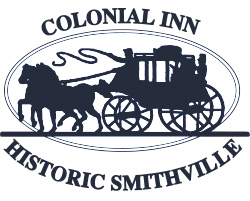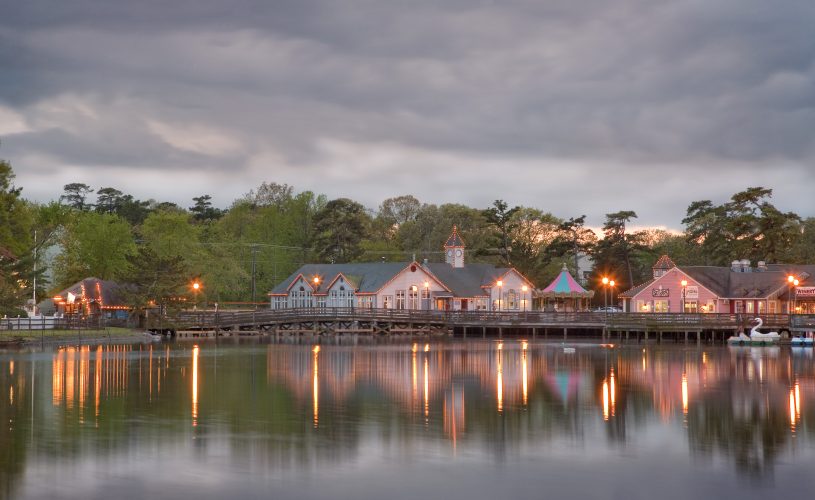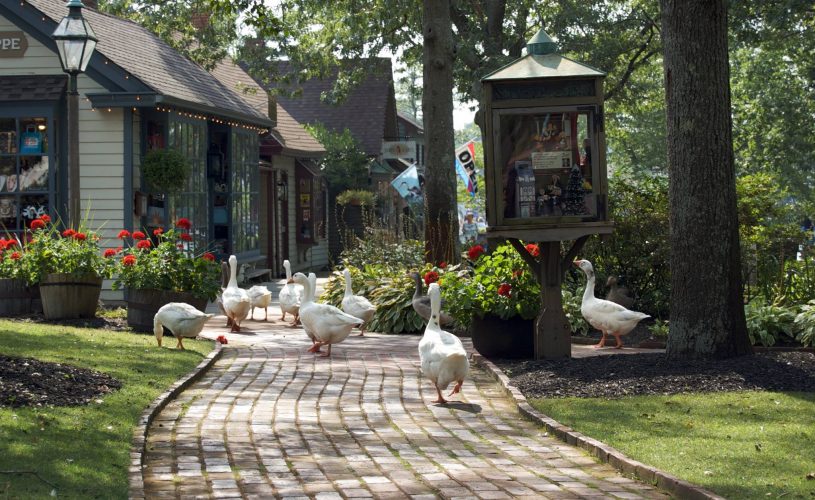The Colonial Inn was created to continue the rich heritage of the Historic Towne of Smithville, which dates as far back as the 16th century when sea captains from the Dutch to the Portuguese explored this area of South Jersey. Smithville has established its own place in America’s history, from the arrival from England of the Leeds Family in 1678, to present day.
Daniel Leeds mapped out the land through a grant by the Crown which was known as Egg Harbor, named for the variety and quantity of birds eggs found in this part of South Jersey. The tidal salt meadow and marsh, interspersed with shallow coves and bays provided an important resting and feeding habitat for water birds on their migration to and from their winter and summer habitats.
These conditions also brought another inhabitant to the area. Long before the Revolution, seamen found the Little Egg Harbor River, now known as the Mullica River, just a few miles north of the Historic Town of Smithville, called Chestnut Neck. A perfect place to smuggle goods in to the new world. They justified this practice by claiming the Crown was taxing them to highly. It also, coincidently, encouraged a much bigger profit since the goods were now duty free. This area to mid 1700’s was virtually uncharted and vast with what is known as the pine barrens. This included the Little Egg Harbor Inlet and River, which harbored a number of sandbars and inland waterways and was a perfect place to auction, barter and sell their illegal bounty. Needless to say, homes and small communities developed around the river and surrounding area.
The Revolutionary War made these pirates a legitimate enterprise. Taking from the British who hired, what they called Privateers, to capture or pillage French supply ships, the Colonists did the same to the British. All that had to be done was equip a vessel with a few cannon and apply to the Continental Congress for a ‘Letter of Marque” which would commission you to do legally what you had been doing for years. Chestnut Neck boasted as many as thirty or more ships at a time, and is said to be one of the biggest privateer operations of the Revolutionary War.
While the colonies won their independence this new found freedom created a wave of expansion. With a trek to the eastern shores. In 1787, James Baremore marrying a cousin of the Leeds family, built the original Smithville Inn on a track of land owned by Daniel Smith who purchased the land a few years before. The Inn quickly became a popular rest for those traveling along the east to west stretch from Philadelphia and Cooper’s Landing (now Camden) to the coast. This created a focal point for merchants and craftsmen alike and was also used for a meeting and polling place up to 1876.
However, the owners who were now the Smith Family joined a growing trend and migrated to the barrier island of Brigantine, and took all but a few brick rooms which ran as a Tavern for a few more years. The advent of the railroad and better roads to travel lead the Smithville Inn into obscurity.
Then in 1951, Fred and Ethel Noyes on a walk through the woods found the original structure, purchased the property and continued the tradition by serving early American Dishes. Over the years Fred and Ethel found and purchased all of the historic buildings from all over South Jersey that you can now see today. In 1964, The Historic Towne of Smithville became a National Historic Site.
Smithville has changed hands many times in the past 30 years. In 1974, the Noyes family sold the towne to the American Broadcasting Company for $7 million, then it was sold to the Smithville Development Company. One of it’s partners, James Cooper purchased the Inn in 1982 and the surrounding buildings, but then in 1985 the Philadelphia based Smithville Associates bought the property and leased the Inn to Cooper. However, the Towne fell on hard times and was eventually bought by the Cresmont Federal Savings Bank for $150,000 at a sheriff’s auction. Which leads us to the present. The Historic Towne of Smithville which is on the east side of Lake Meone, was purchased by the Towne of Historic Smithville Partnership LLC., Anthony Coppola Lead Partner. The Village Greene on the west side of Lake Meone was purchased by Ed and Wendie Fitzgerald. Both owners have displayed dedication to the rich American tradition that people have enjoyed since it’s humble beginnings in 1787.




